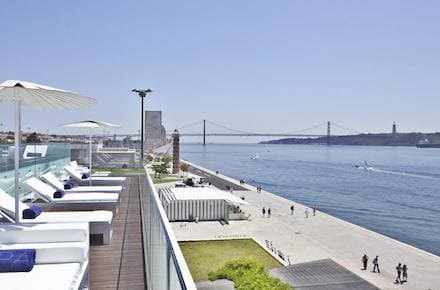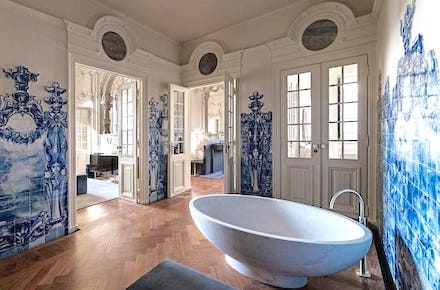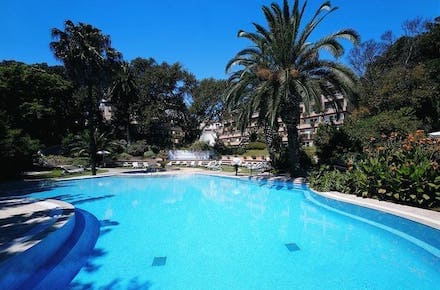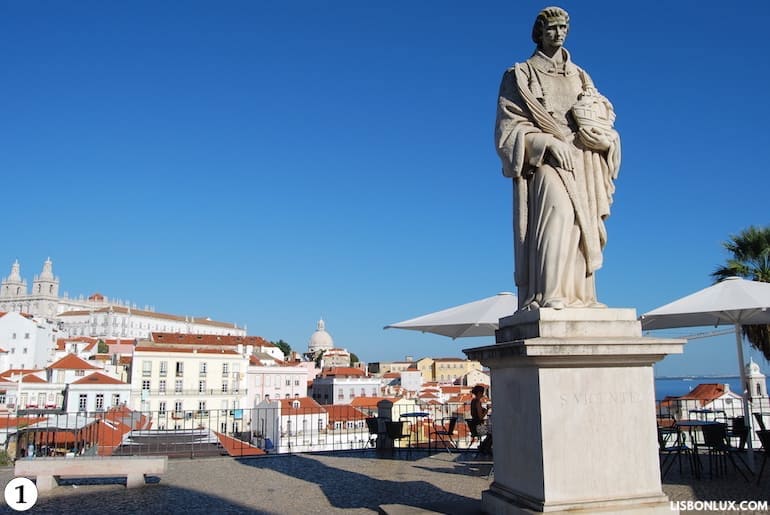
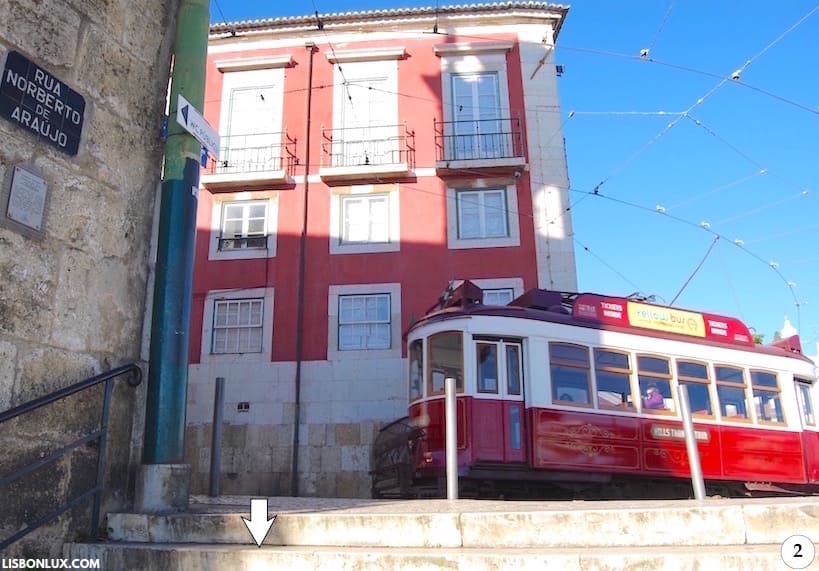
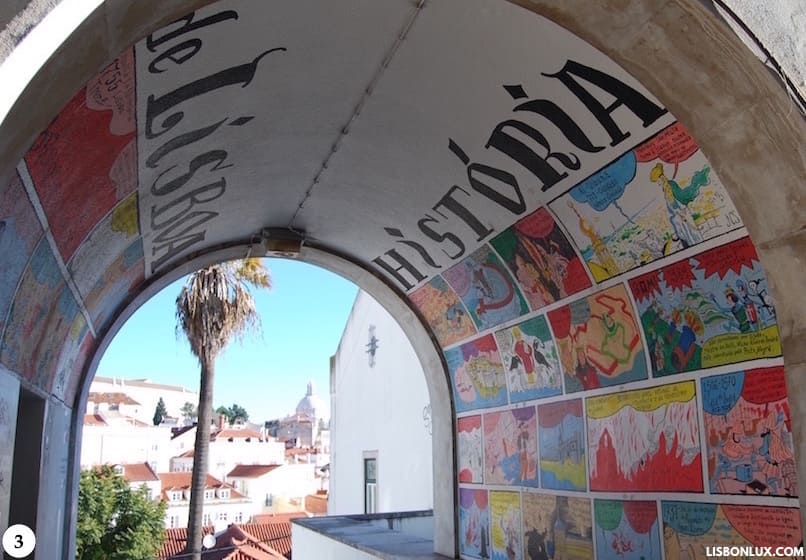
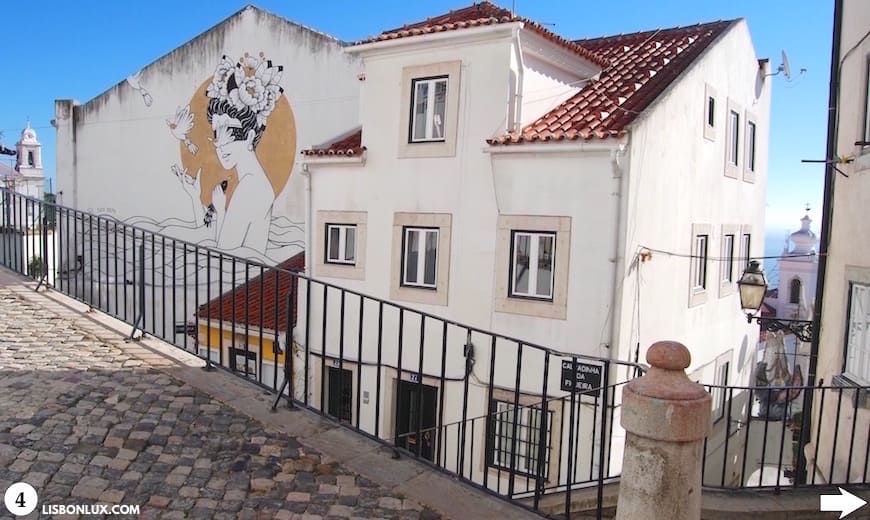
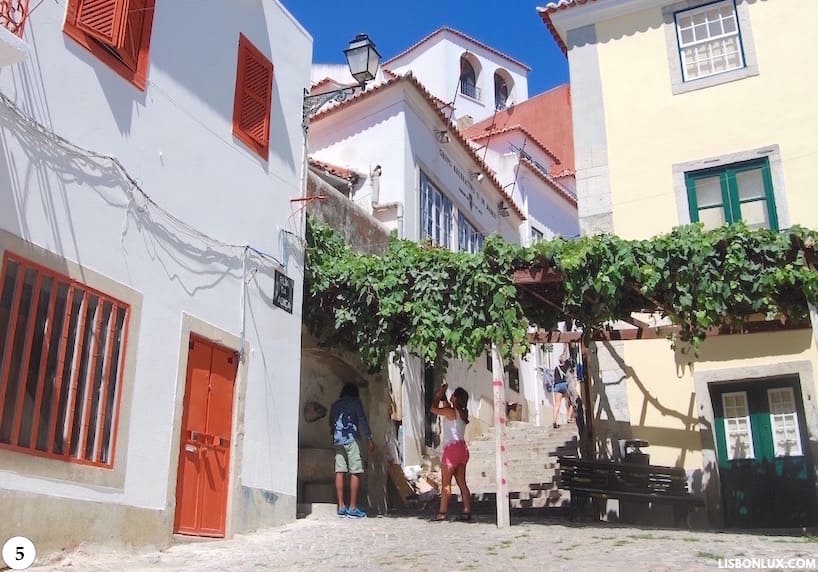
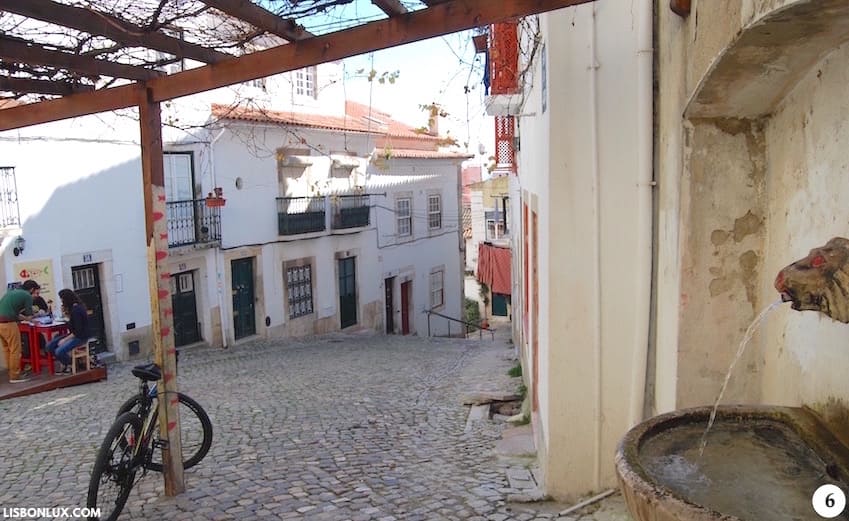
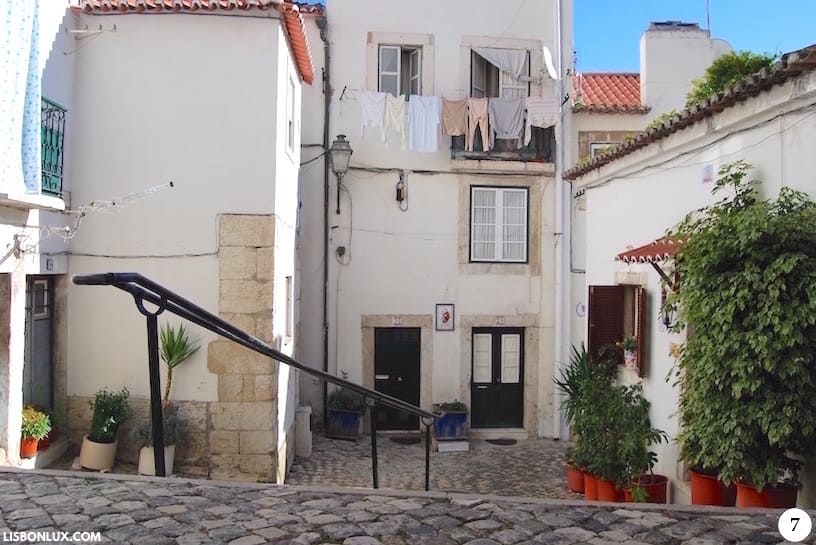
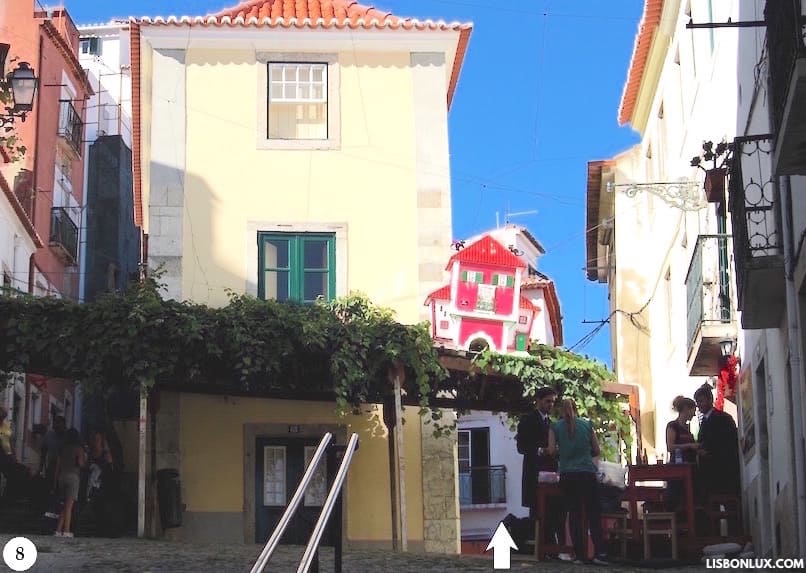
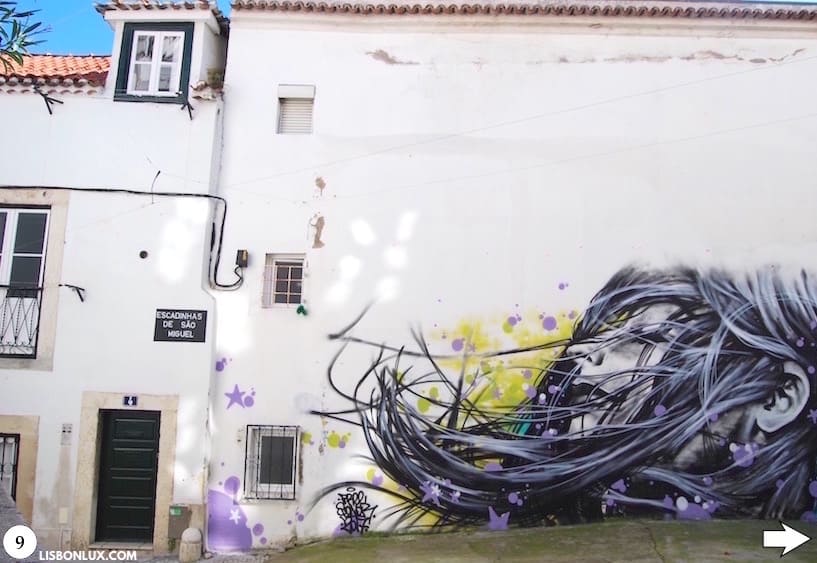
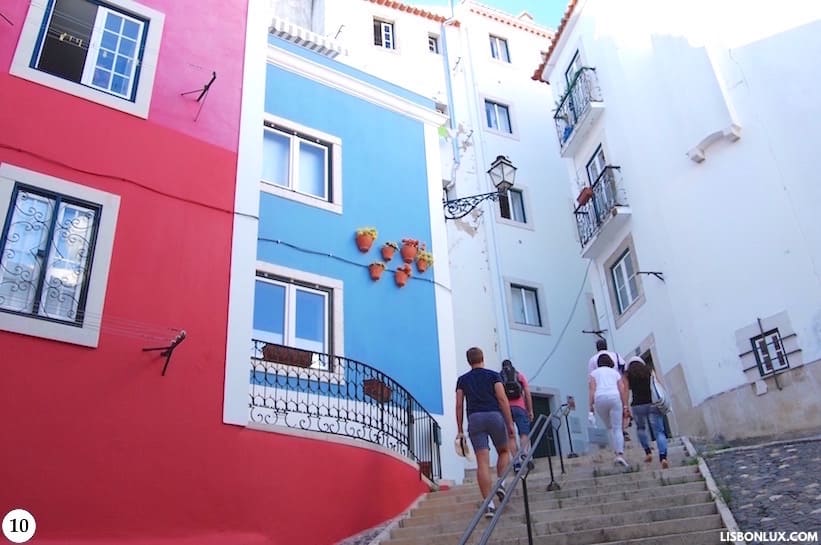
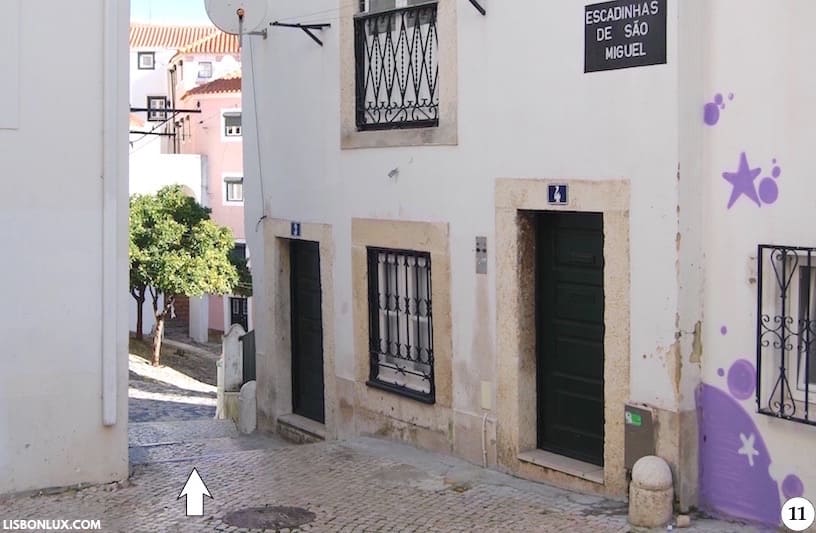
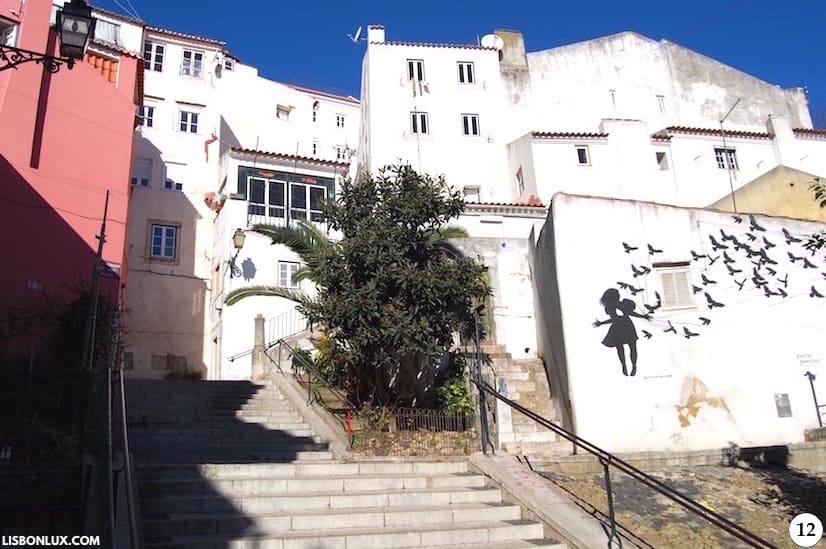
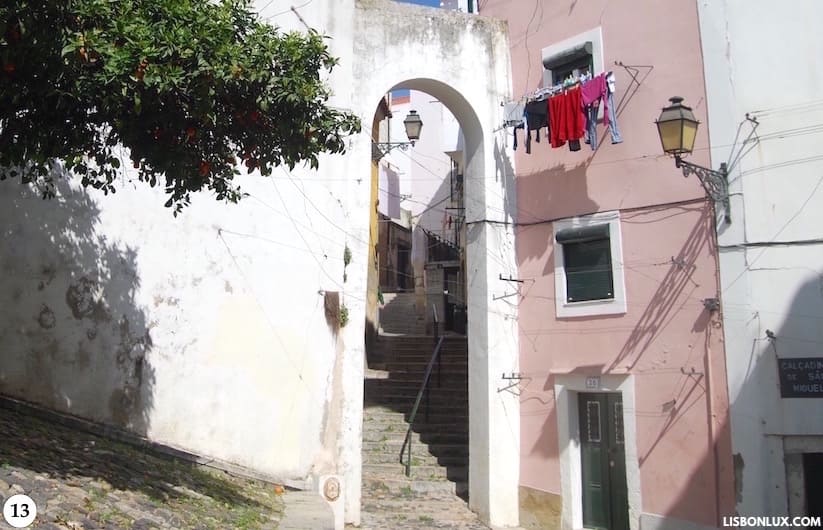
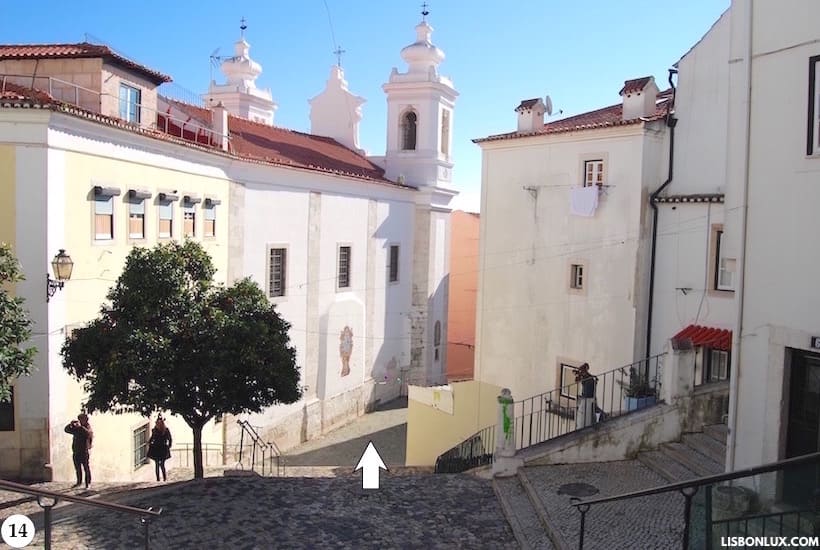
Take tram 28 to Miradouro da Portas do Sol (1). After taking in the views, head to Rua Norberto de Araújo, a street that starts with a flight of steps (2). Just a few steps down you see an arch on the left, illustrating scenes from Lisbon’s history (3). At the end of the stairs you see the bell towers of two of the neighborhood’s landmark churches (Igreja de São Miguel and Igreja de Santo Estêvão ) (4), and should continue straight ahead to Rua da Adiça (5). Here you find one of the neighborhood’s many small fountains (6) and one of the most picturesque corners in the city (7). Turn back on Beco das Canas (8), and go down the stairs. Turn left onto Rua da Galé (9), where you see two colorful houses that are just waiting to be photographed (10). Go back on Rua da Galé and down Escadinhas de São Miguel (11), where you will want to snap a photo from every angle (12)(13)(14).
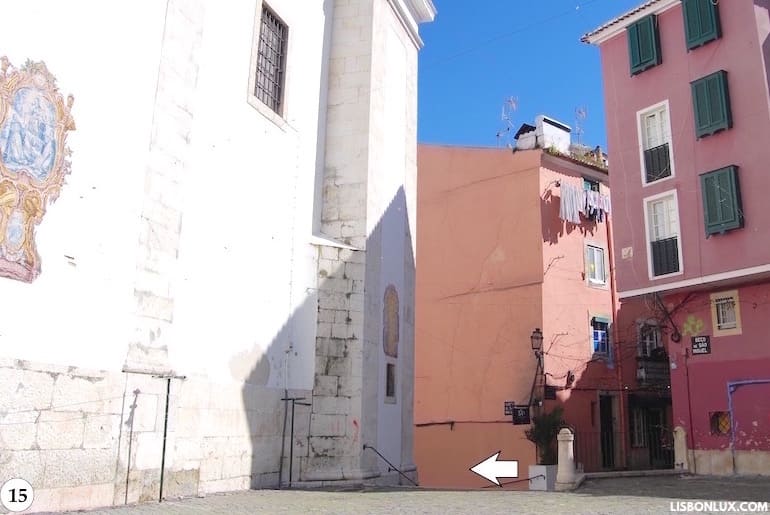
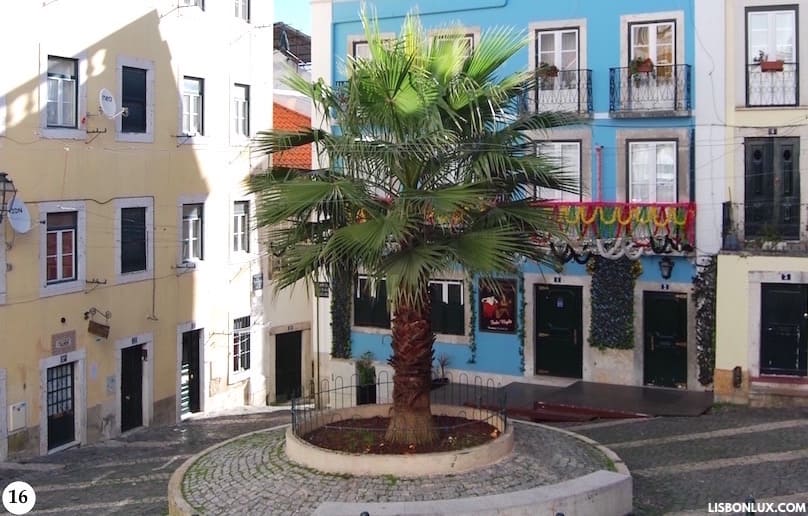
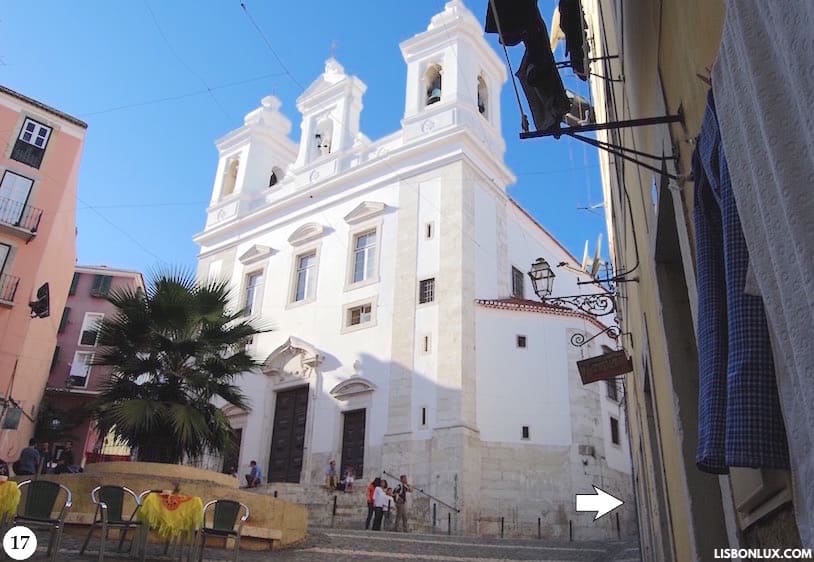
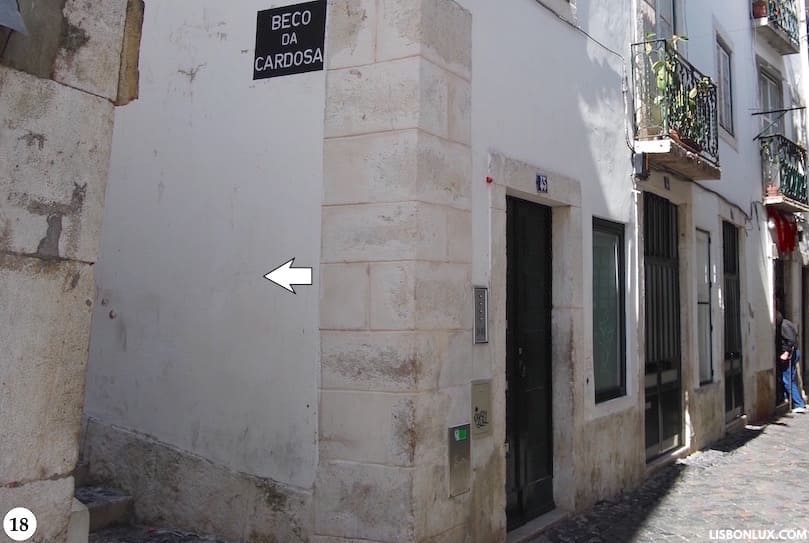
As you reach Igreja de São Miguel, you see the first of many tile panels from the 1700s (15). This one dates from 1770, and illustrates Our Lady of the Rosary and Baby Jesus over St. Dominic and St. Catherine of Siena. Turn left down the stairs around the church, and you reach Largo de São Miguel with its small palm tree (16). Turn left at the church (17) to Calçada de São Miguel, where you have a view of Igreja de Santo Estêvão in the distance, but turn left at Beco da Cardosa (18).

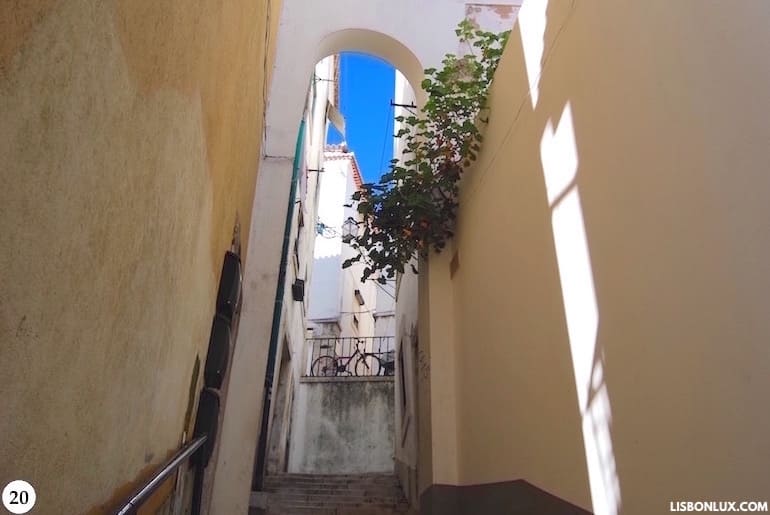
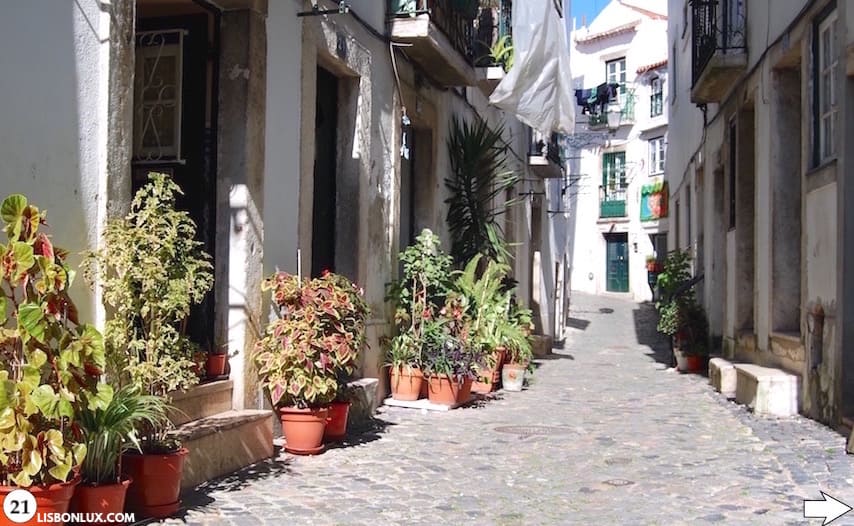
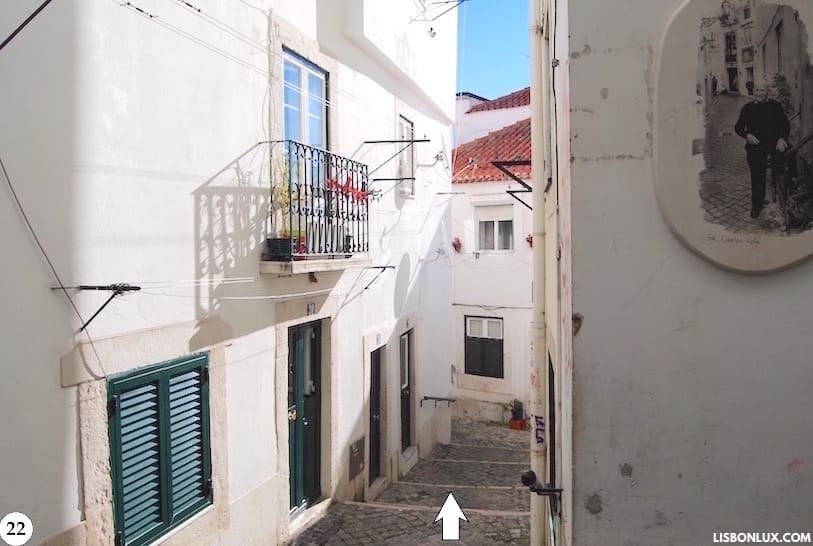
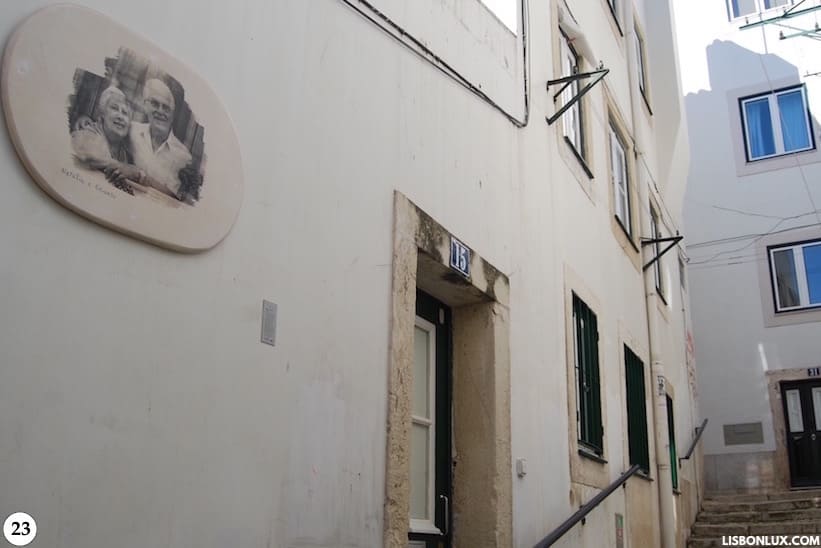
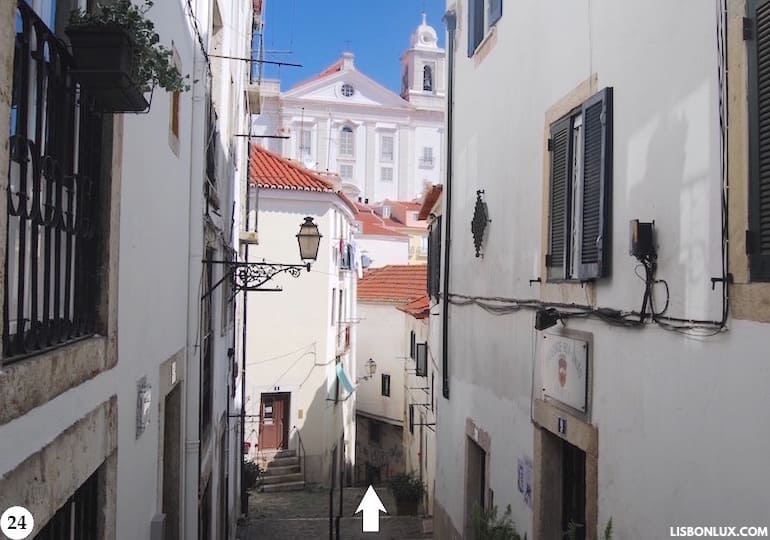
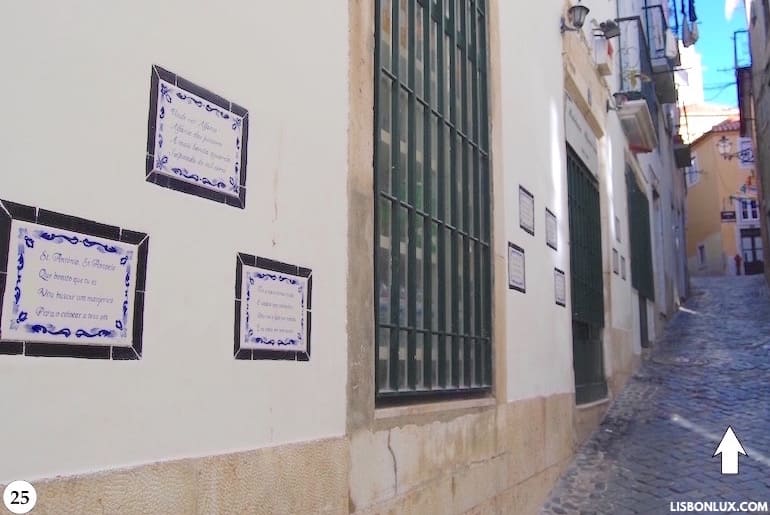

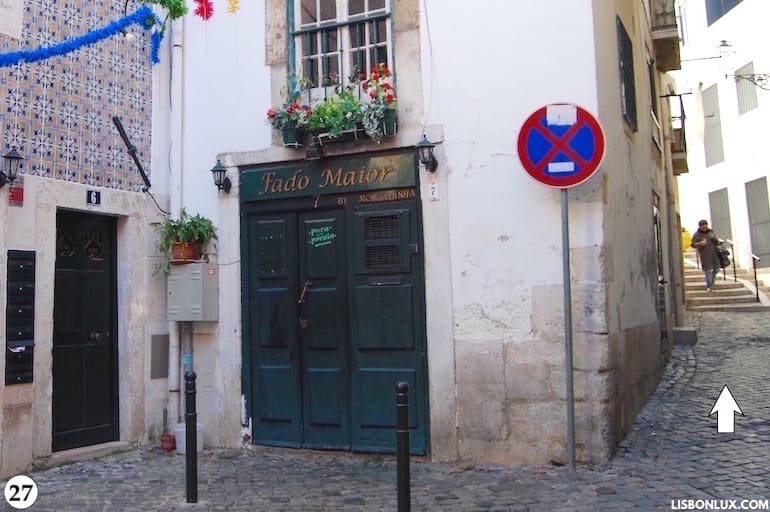
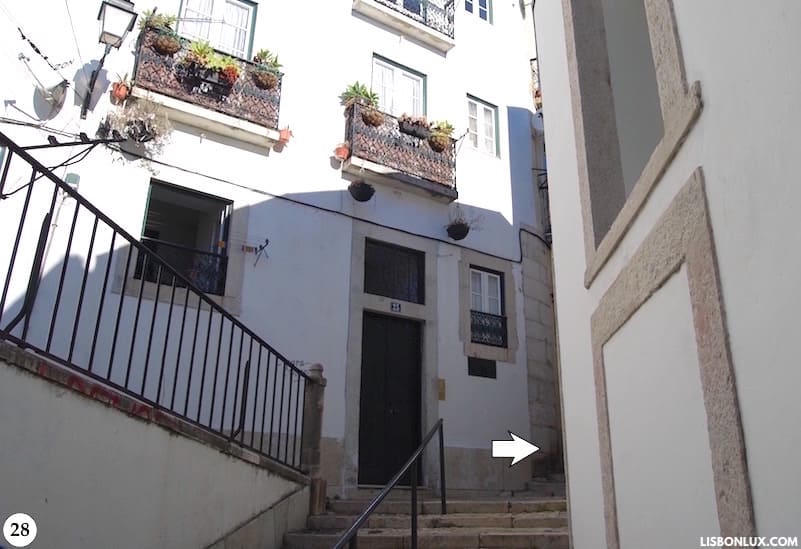
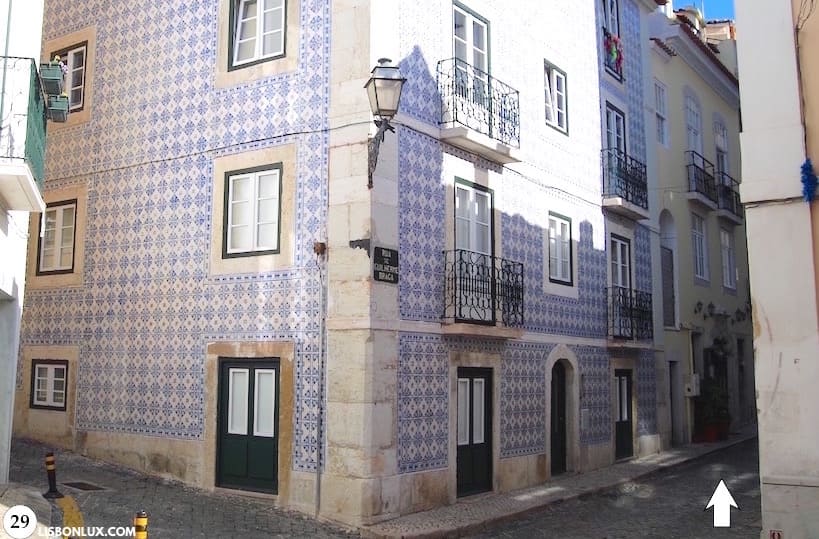
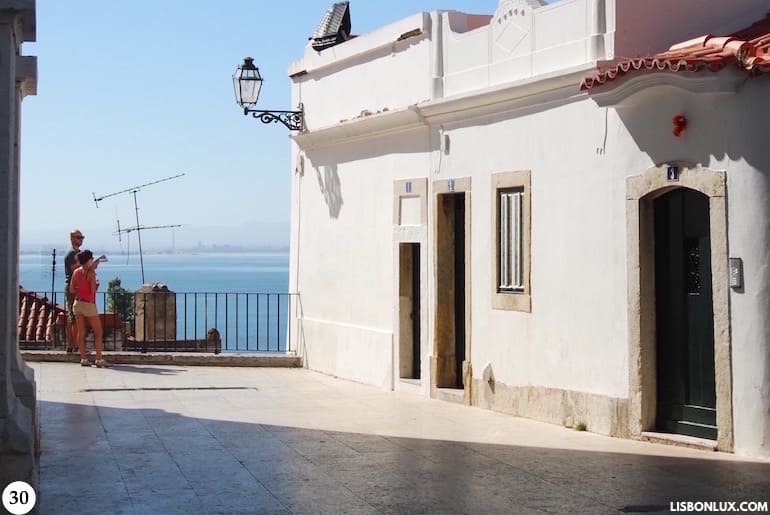
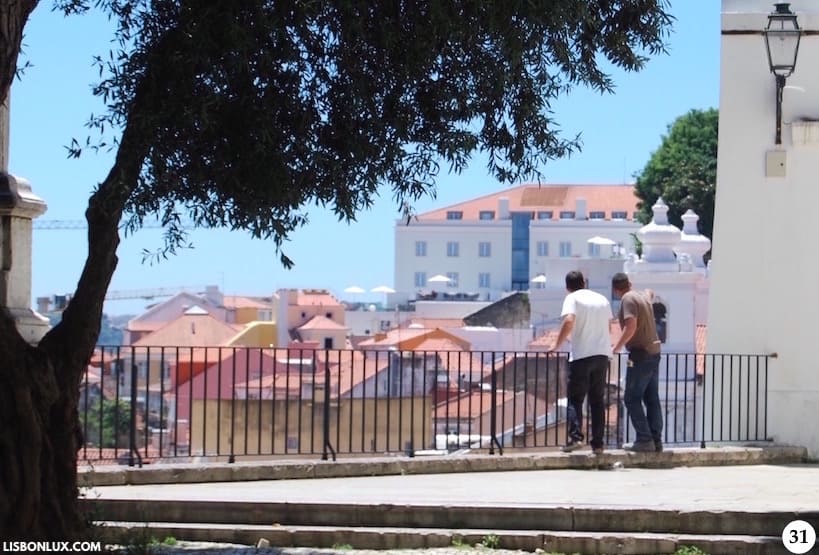
Go up the steps, past an orange tree (19), and when you reach the top (20) you’re at Rua Castelo Picão (21), where you should turn right at Beco das Cruzes (22). Here you find portraits of locals on the façades, created by British photographer Camilla Watson (23), and see the façade of Igreja de Santo Estêvão (24). At the end of the stairs, turn left (25) towards Largo do Peneireiro, where you turn right (26) and go up another flight of steps (27) (28). At the top, turn right on Rua de Guilherme Braga (29), and head towards Igreja de Santo Estêvão. From its terrace (30) is a view over Alfama (31).
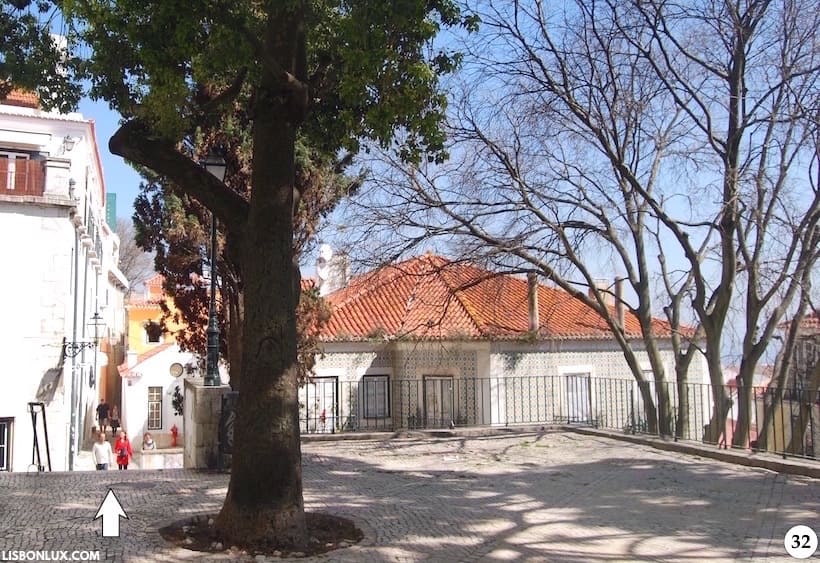
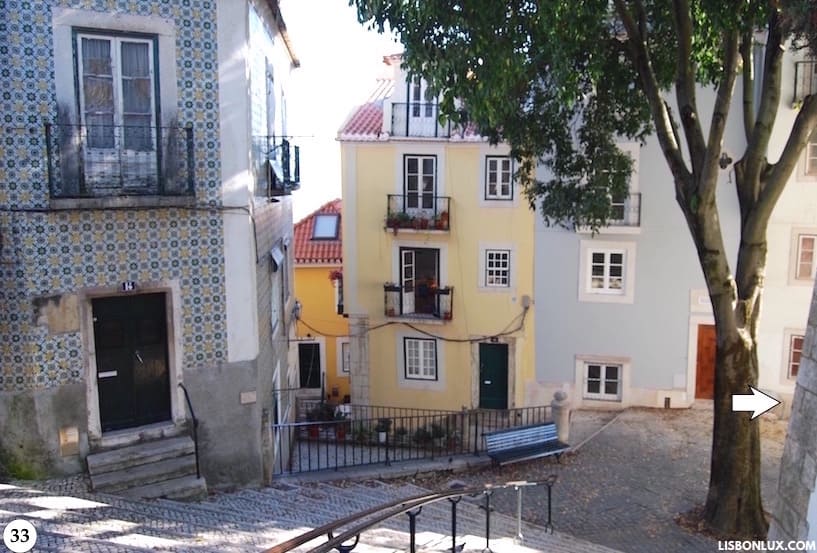
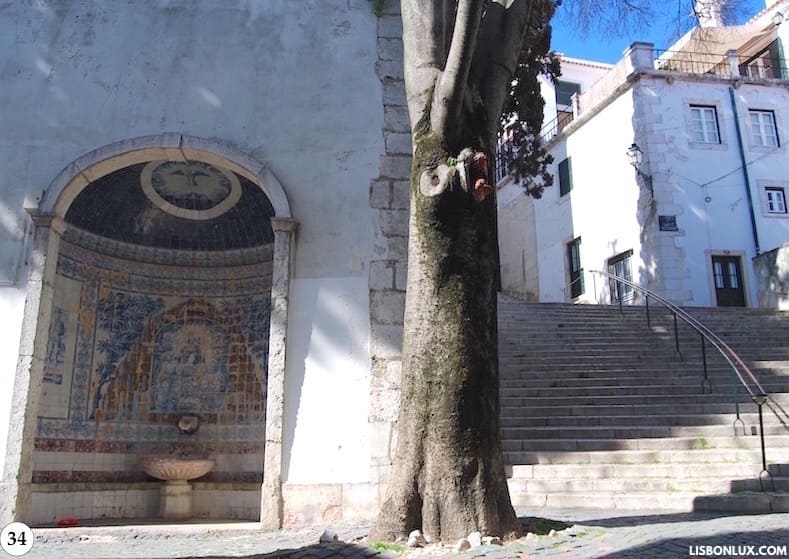

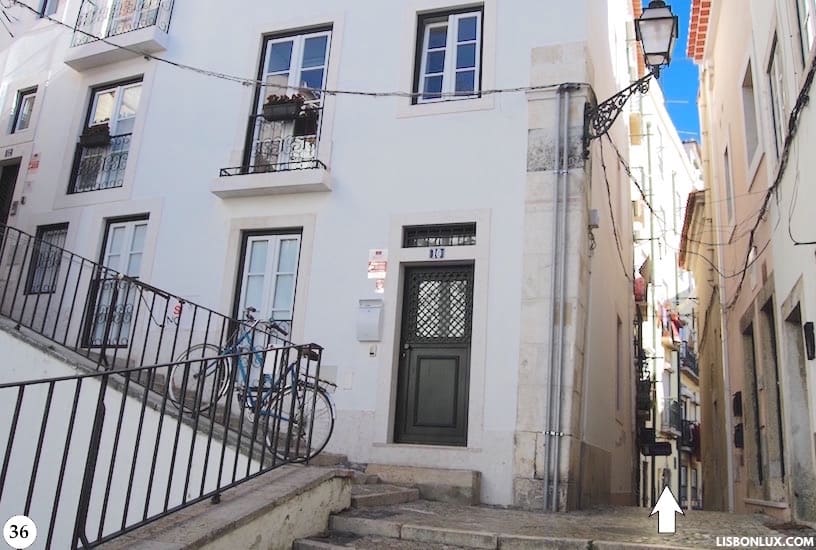
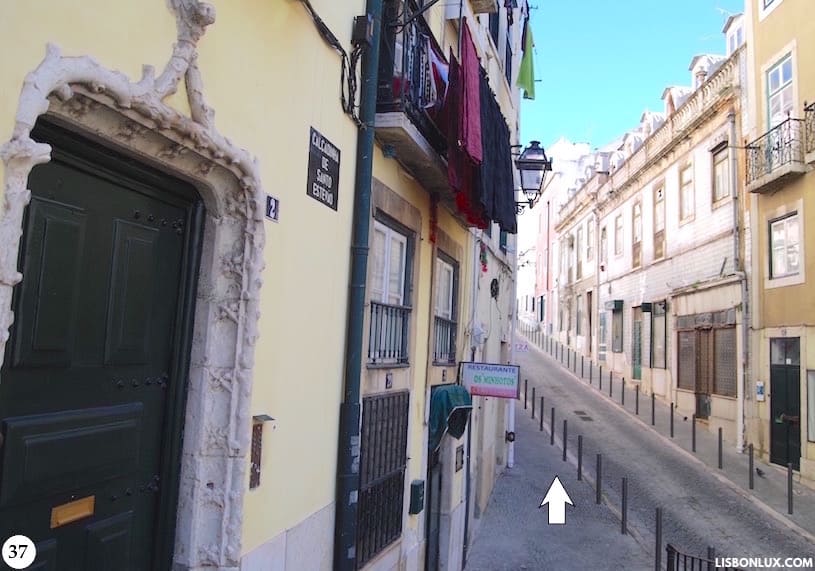
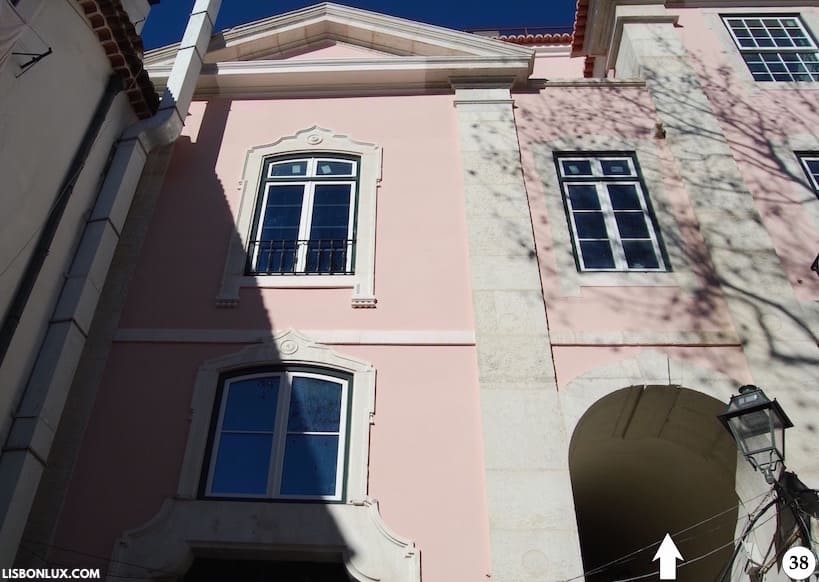
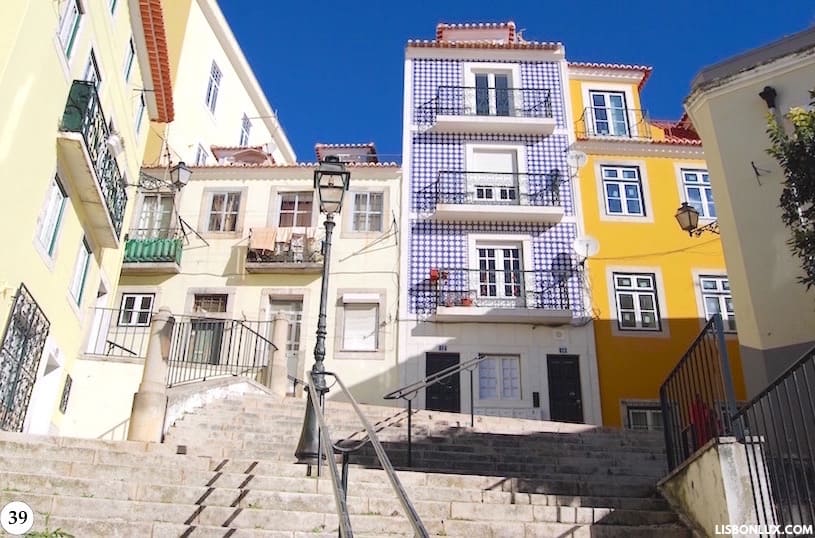
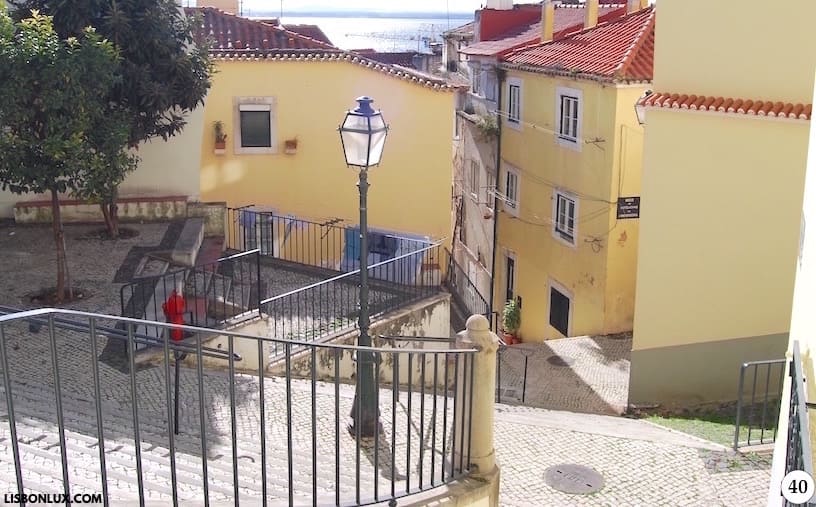
Behind the church are more stairs (32), taking you past tiled houses (33) and an 18th-century fountain also covered with tiles (34). Go down Escadinhas/Calçadinha de Santo Estêvão, and you pass by the old public baths, as indicated by a tile panel (35). Turn left at the bottom of the steps to Calçadinha de Santo Estêvão (36), and you reach Rua dos Remédios, one of the streets that mostly escaped the 1755 earthquake. Going past a curious Manueline portal (37), head straight up Rua dos Remédios, and when you reach number 139, go under the arch, up Escadinhas do Arco da Dona Rosa (38). At the top of the steps is the picturesque Beco dos Paus (39), a perfect spot for a break, looking out to the river (40).
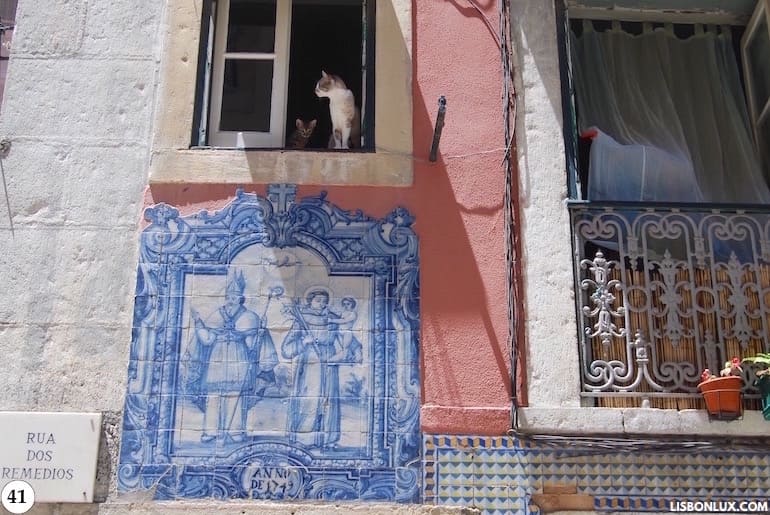
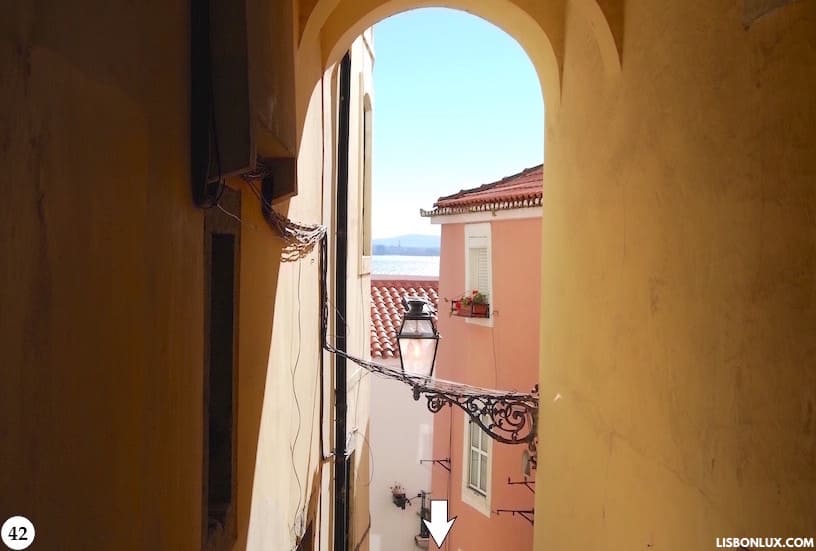
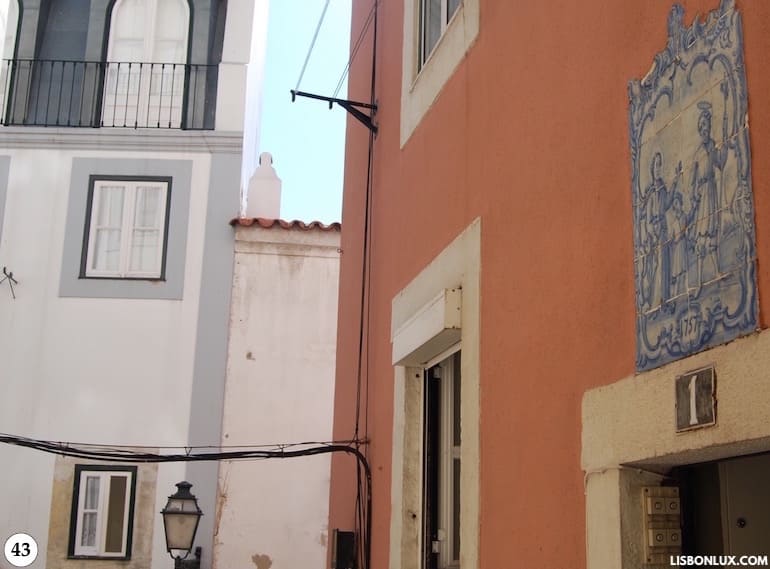
Going back down the stairs of Escadinhas do Arco da Dona Rosa, you return to Rua dos Remédios, where you see another historic tile panel on number 145 (41). It’s a panel that survived the earthquake, dating from 1749 and illustrating St. Martial and St. Anthony with the Baby Jesus. Tile panels depicting St. Martial are a common sight on Lisbon’s façades, as it was believed that the saint protected homes from fires. Right across from this panel is the arch of Escadinhas dos Remédios (42), which hides another panel (43), this time from 1757 and illustrating the Holy Family returning from the “Flight into Egypt.”
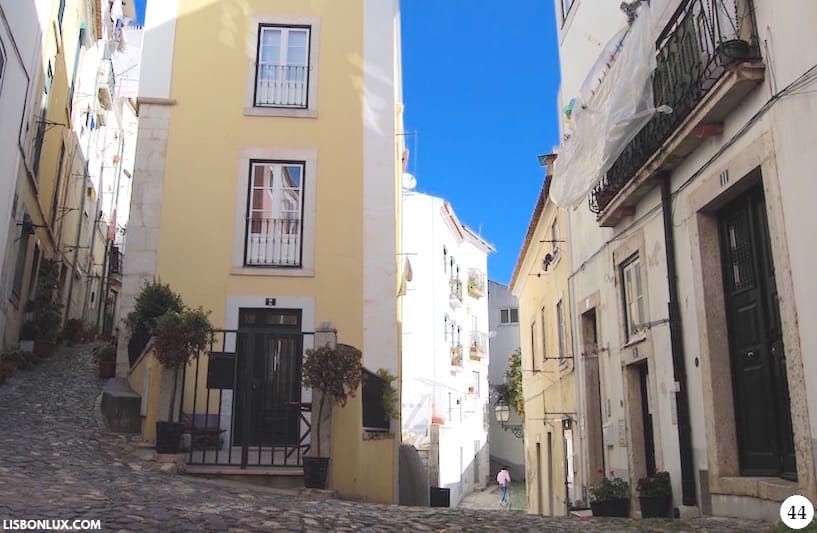
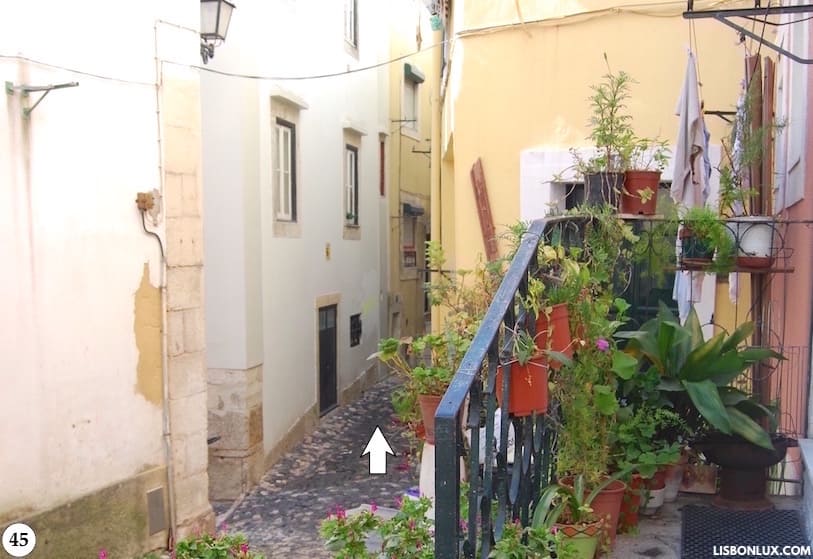
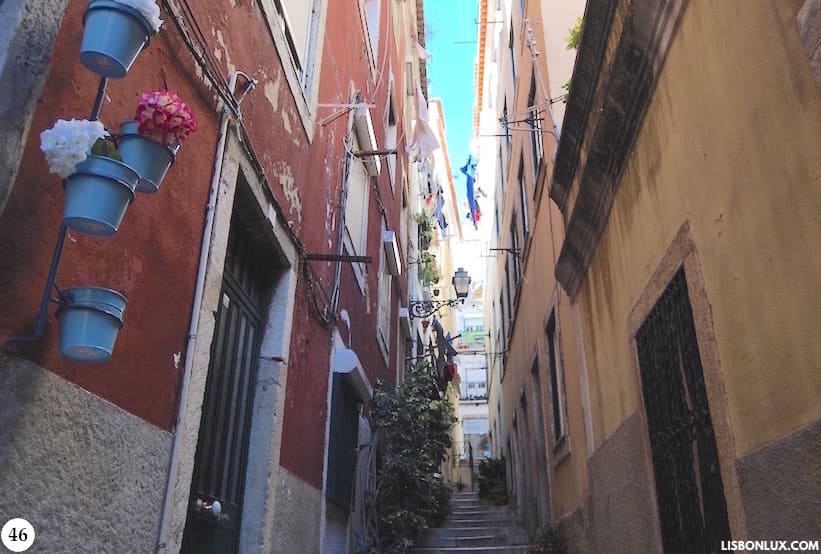
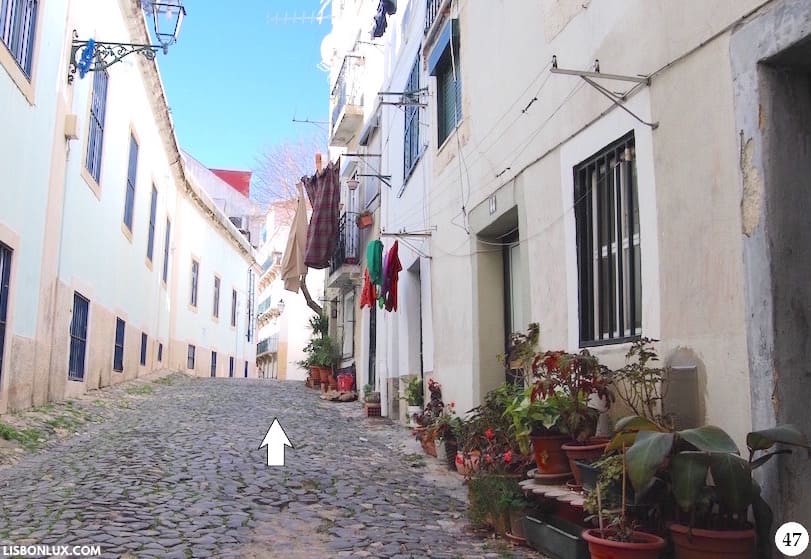
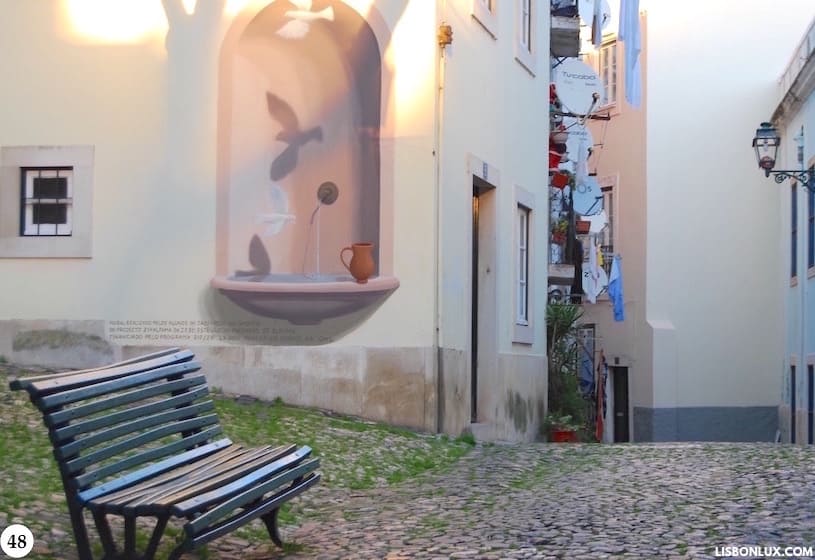
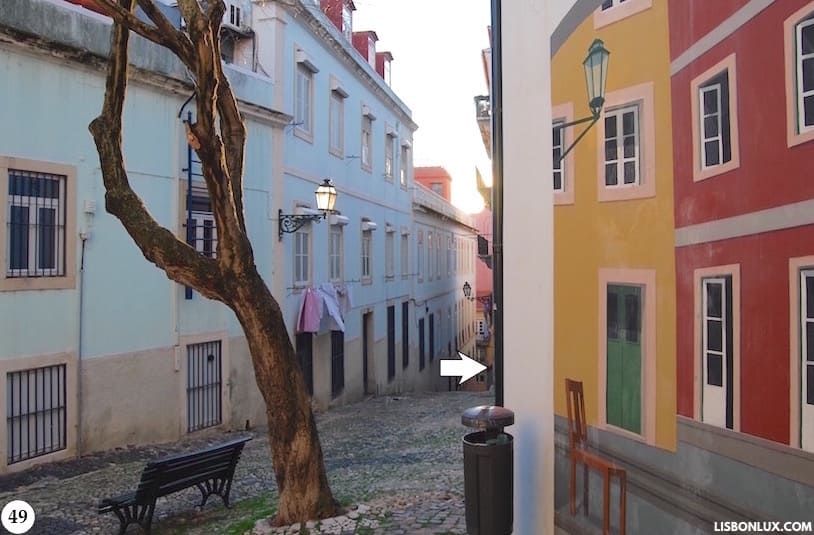
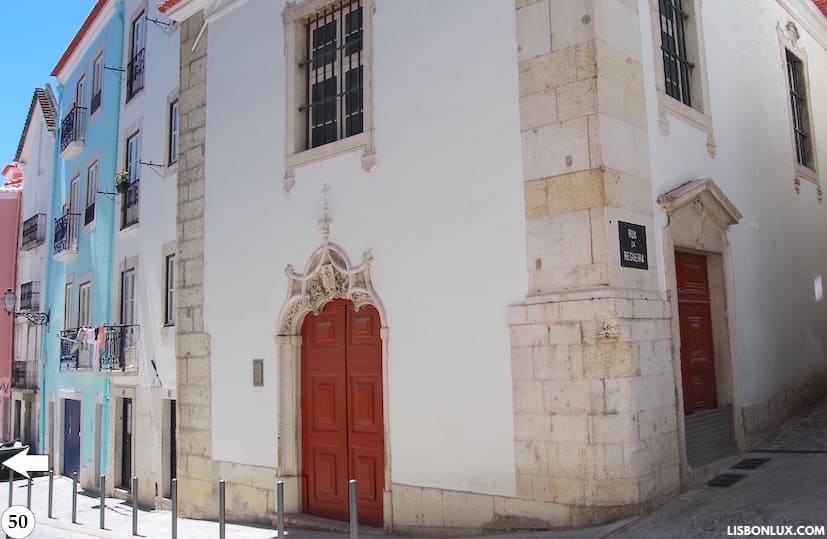
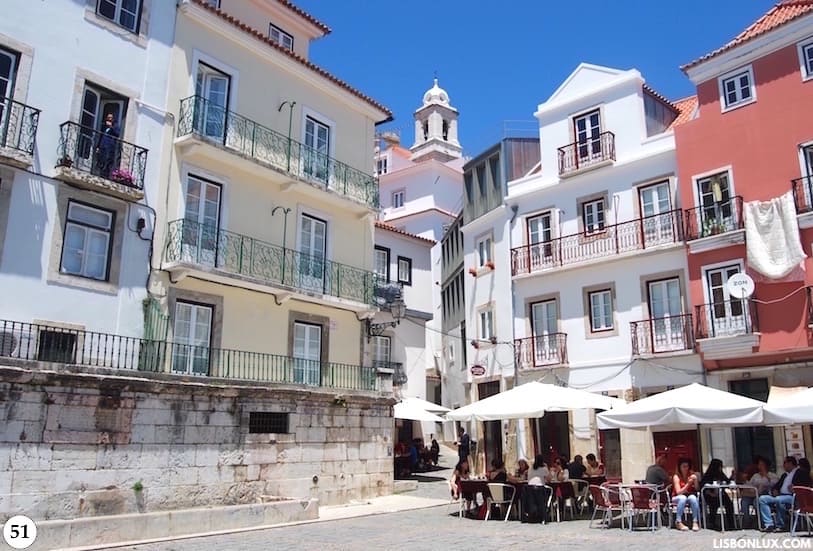

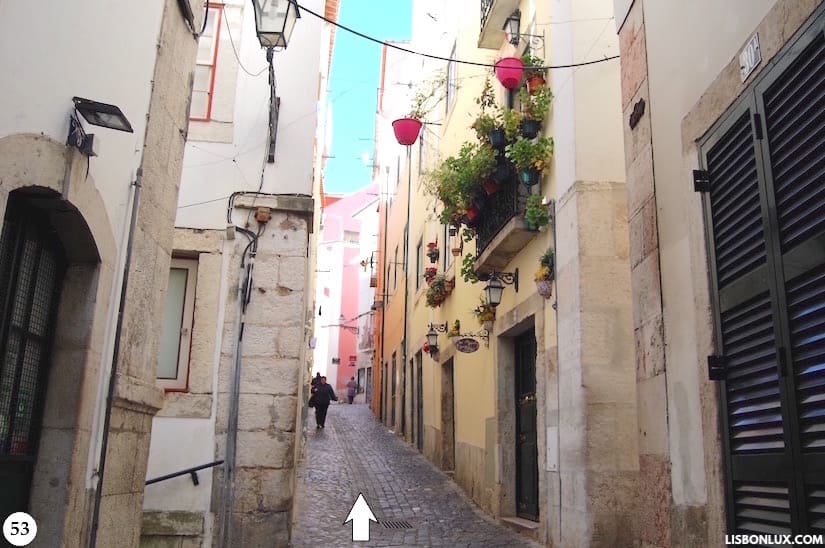
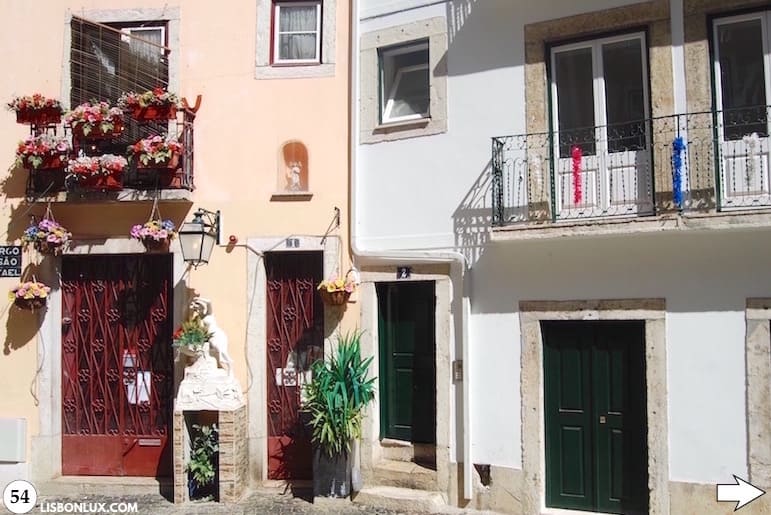
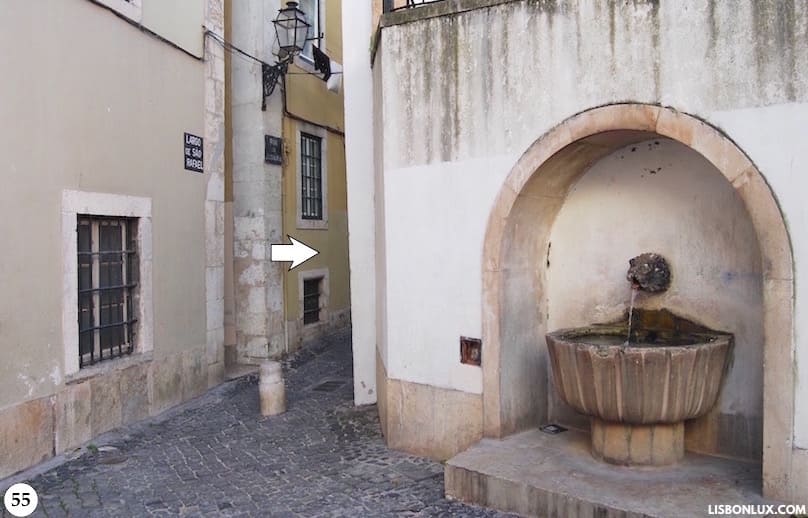
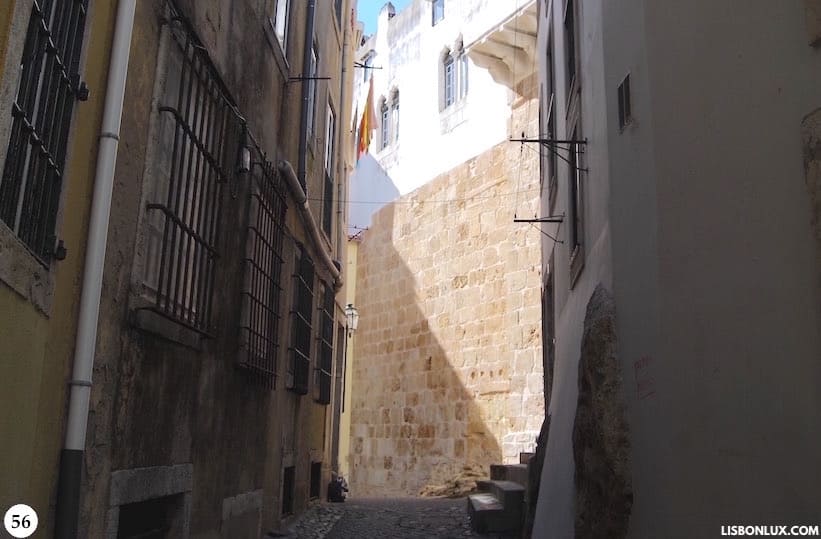
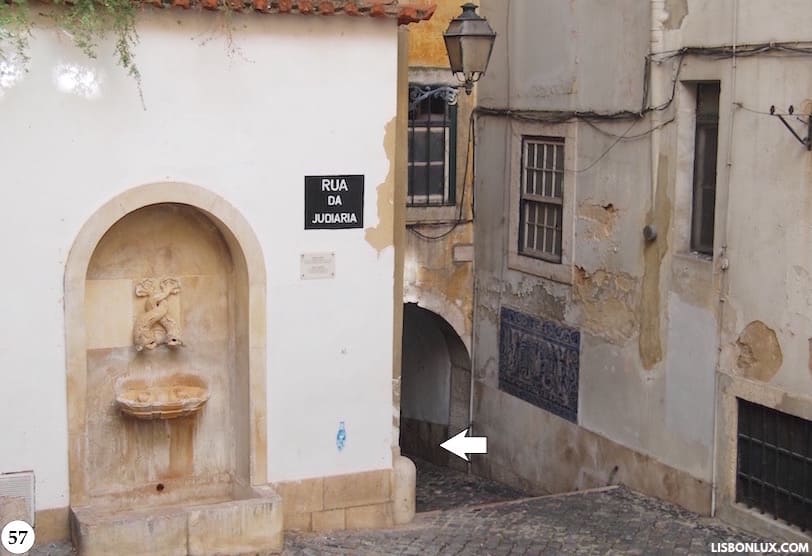
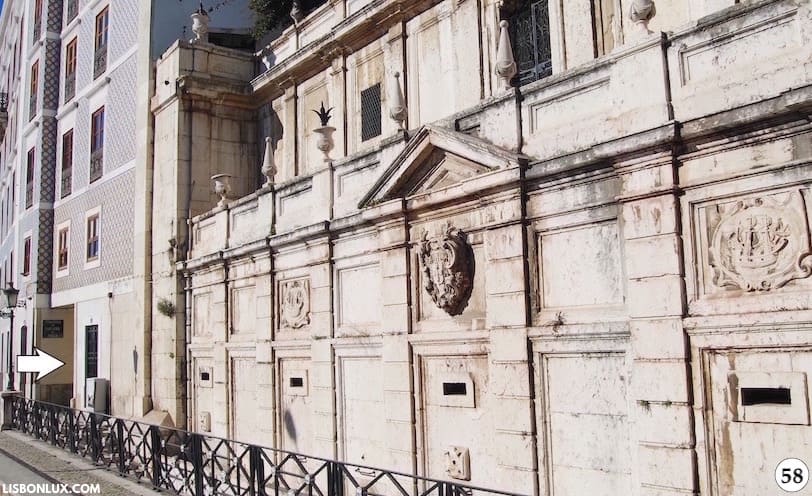
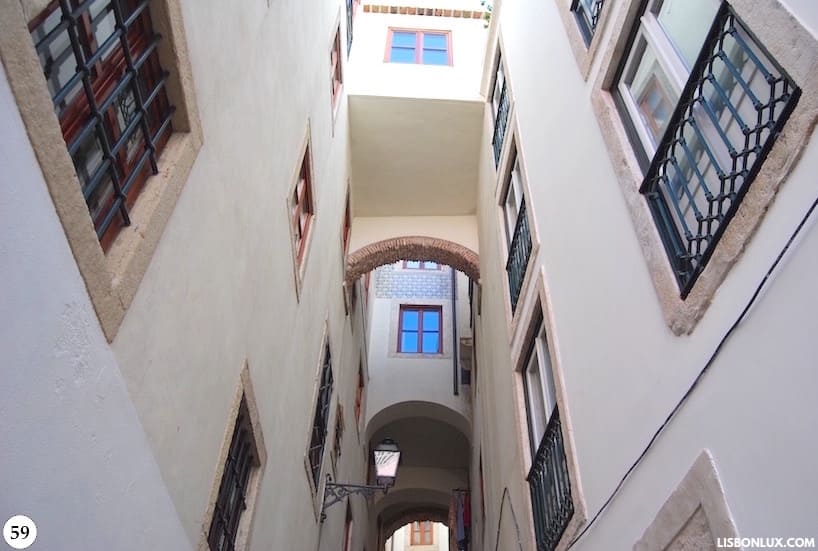
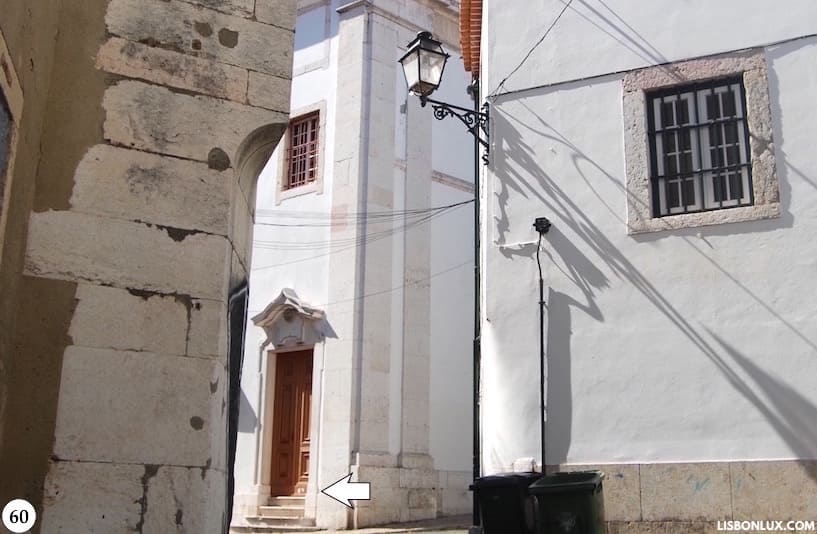
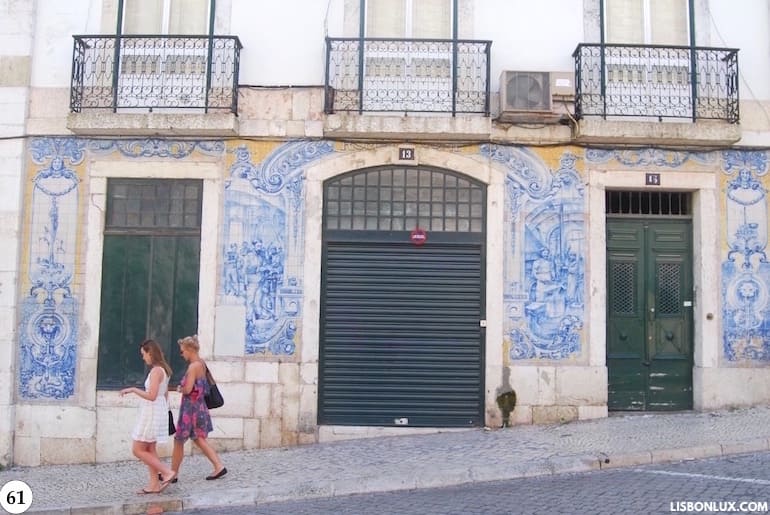
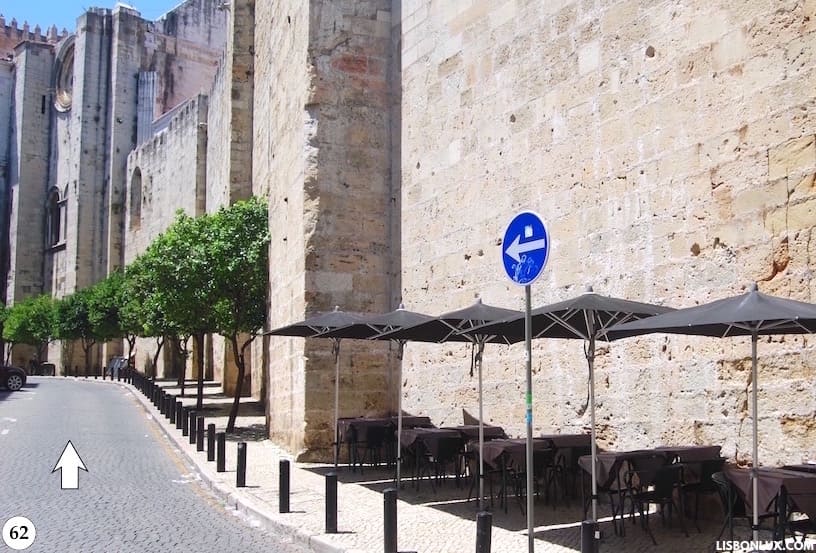
At the end of Escadinhas dos Remédios (44), turn right (45). Continuing straight ahead, you eventually find Beco dos Ramos on the right, an alley full of potted plants that once gave it the title of Lisbon’s "most flower-filled street" (46). Continuing down Beco da Lapa (47), you see a piece of street art created by local art students (48). Turn right on number 74 (49), and you’re once again on Rua dos Remédios, where you turn left and head towards Capela dos Remédios, with its beautiful Manueline portal (50). You then reach Largo do Chafariz de Dentro (51), where you can visit the Fado Museum . There are several outdoor cafés here for a break, before heading towards the northwest corner of the square (52), down Rua de São Pedro. You pass by several fado restaurants on Rua de São Pedro (53) and eventually arrive at Largo de São Rafael (54), where you step into the old Jewish quarter (55). Here you see two surviving Manueline windows (56) and a small fountain. Going under the arch (57) you turn right, where you find a monumental drinking fountain from the 1800s. Turn right on Travessa de São João da Praça (under the arch next to the fountain) (58), and turn left under a series of arches (59) until you reach the Church of São João da Praça, where you should turn left (60). Go down Rua de São João da Praça and you eventually reach the cathedral , passing by beautiful tile panels (61) and more orange trees (62).

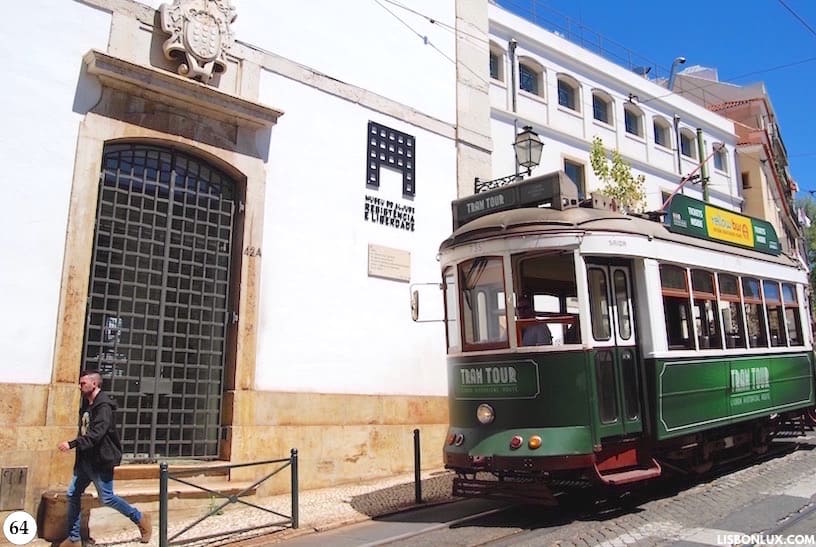
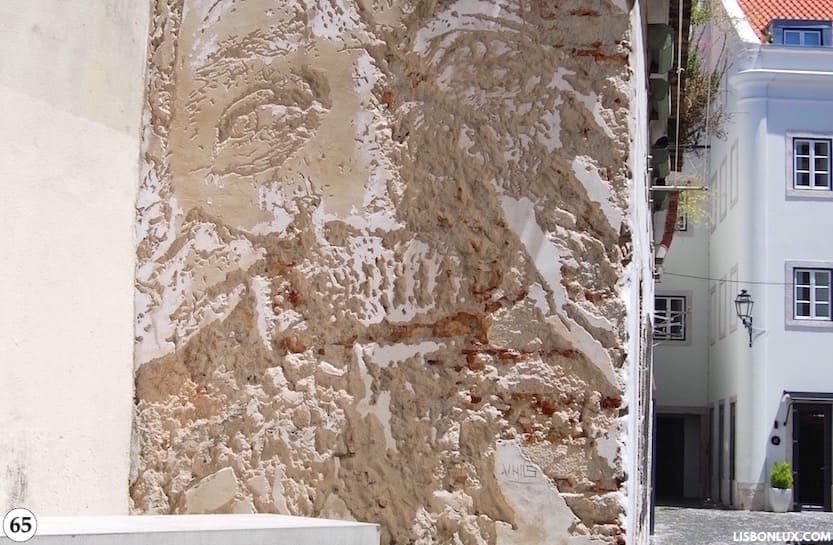
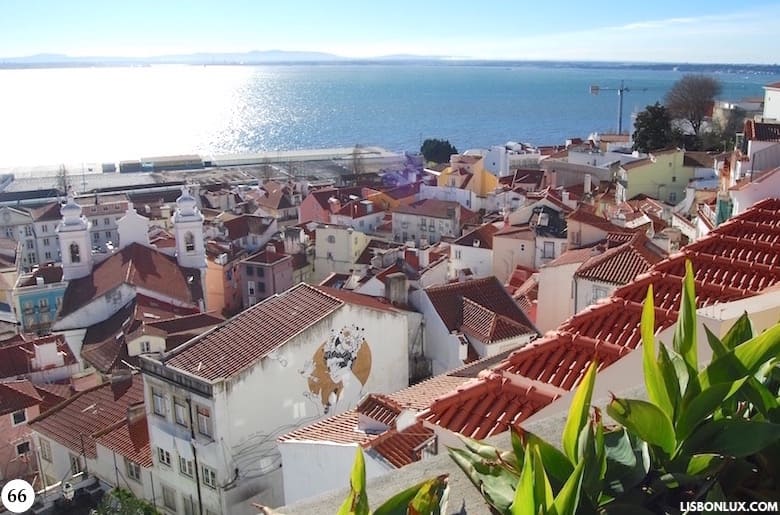
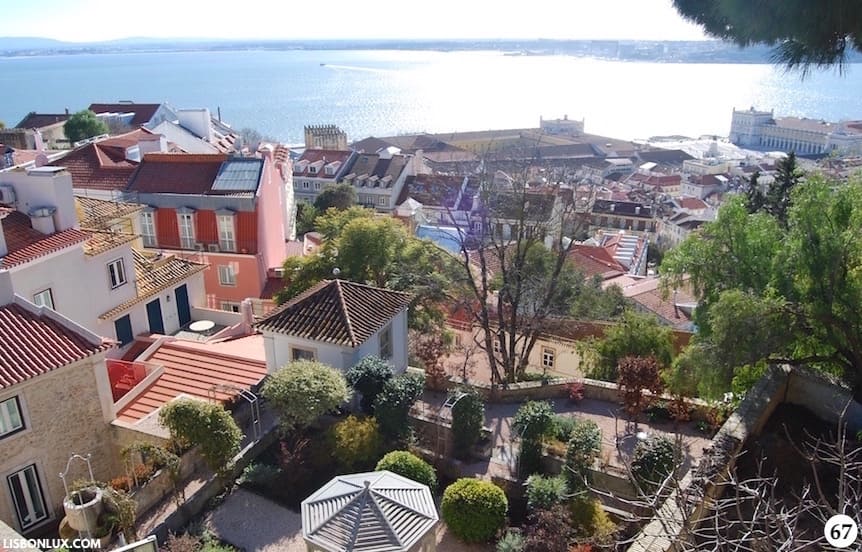
Going around the cathedral, up Rua Augusto Rosa (63), you pass by the Aljube Museum (64) and the Roman Theater Museum, which is a branch of the Lisbon Museum . When you go past number 17 of Rua Augusto Rosa, turn right at Travessa das Merceeiras towards the Memmo Alfama Hotel. It’s on this street that you find one of the city’s most iconic pieces of street art, created by Vhils (65). Go back to Rua Augusto Rosa, and follow the tram tracks up the hill. You’re almost back at your starting point, but first stop at Miradouro de Santa Luzia to admire the neighborhood that you’ve just visited (66). From here you can head to the castle , where you have even more views over the city (67), and can then follow the tram tracks again, towards the São Vicente de Fora Monastery and the National Pantheon , and from there to Miradouro da Graça .
